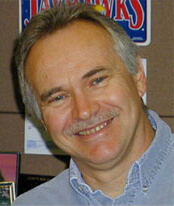In this ControlGlobal.com article, The unrecognized challenges of process control, process automation Hall of Famer Greg McMillan poses as mentor and mentee, asking and answering some challenges that process control engineers face.
Greg opens as a mentor with many unrecognized challenges process control engineers face.
Processes are nonlinear with dead times, time constants, and gains that change with production rate and operating conditions of the process, as well as the design and installation of the instrumentation. Process dynamics can often change by factor of four or more when changes in production rate, operating conditions, startup, and hidden factors come into play.
In addition, pH control with a strong acid or strong base can exhibit one or more orders of magnitude changes in process gains that are highly dependent upon operating point. Temperature sensor and electrode lags are greatly affected by velocity and fouling. Changes in pH electrode dynamics can be extraordinary due to aging or fouling of the measurement electrode increasing the measurement lag by orders of magnitude.
Control valve resolution and sensitivity limits and lost motion often seen in rotary valves designed for tighter shutoff and higher capacity add significant dead time and a loss in precision that also result in limit cycles. The stroking time is a serious limitation for fast control, particularly in compressor and pressure control applications. Improper installation of sensors either from the start or during maintenance can aggravate the problems (looser fit of sensor in a thermowell creating an air gap), as well as promote mishandling and dehydration of glass electrode (deterioration of fragile thin gel layer increasing error and lag by orders of magnitude, equilibration of the reference electrode taking hours to days). The effect of signal filter times and execution intervals often not recognized in terms of increasing loop dead time and hiding the true variation in the process, being particularly detrimental to fast loops.
Read the article for answers to these questions he poses to himself:
- What is the general availability of process control algorithms needed?
- What testing is needed?
- What are some of the additional challenges in process dynamics?
- It has been proven that the PID is the best control algorithm for dealing with process input disturbances whereas the academic literature commonly shows process output disturbances. What is the reality?
- What about signal filtering?
- What is the most common mistake in tuning?
- What is the most common mistake in feedforward control?
Greg closes by noting the loss of expertise as time passes. Greg and most of his fellow experts are now in their 70s, and he believes the capabilities in proportional-integral-derivative (PID) control are increasingly underutilized. Spend some time with the article and look for publications he and the other greats of process control have shared.





